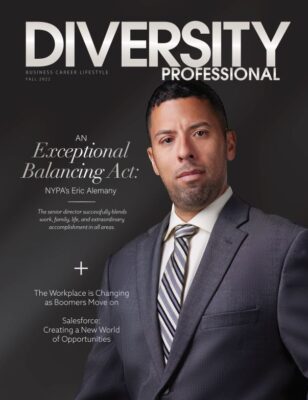Rise Of The GIG Economy: Equalizing The Workforce
How the new model promotes entrepreneurship
What is the gig economy, and what affect will it have on a diverse workforce?
According to WhatIs.com, an information technology site, “A gig economy is an environment in which temporary positions are common and organizations contract with independent workers for short-term engagements.” Uber and Airbnb epitomize this new economy, but they aren’t alone. There is a wide range of companies across all sectors that are also taking advantage of the gig economy.
A few factors have convinced companies to embrace the trend of an open talent economy. As described in a paper from Deloitte, a network of independent firms in the tax and finance industries, changes in regulations, such as overtime mandates, increased minimum wage and tightening rules for part-time status, have both small and large businesses looking for alternatives. Second is the shrinking availability of qualified talent as unemployment falls in some markets and voluntary turnover rises, according to attorney Dennis M. Mulgrew, Jr. The two play into companies’ need for an innovative talent management model.
By 2020, 40 percent of American workers will be independent contractors.
A comparison of the 82 million 1099-MISC forms received by the IRS in 2010, which are required employer submissions for all freelance labor, to the approximately 174 million forms filed in 2014 shows that the use of freelance workers more than doubled in four years. Today, more than one in three U.S. workers are freelancers – a figure expected to grow to 40 percent by 2020,according to a Wall Street Journal article.

The corporate workforce is changing radically. A diverse workforce is defined as the composition of diverse worker types: workers on and off the balance sheet, part-time, contingent and virtual workers within the new world order of the gig economy. In some respect, it may level the playing field.
The model is ideally powered by independent workers of all ages choosing jobs they are interested in rather than temporary jobs they are forced to pick up because they are unable to find work. According to a CIO interview with Rich Pearson, senior vice president of marketing and categories at Upwork, more businesses will begin structuring themselves as “remote first” instead of “remote friendly” or “on-site only,” giving workers the ability to work from anywhere. This model effectively removes age, mobility and familial obligation restrictions from a diverse and talented workforce.
What about minority-owned small businesses? How are they affected by this trend? From a cost standpoint, the gig economy can greatly reduce long-term payroll expenses, allowing minority-owned businesses to invest time and capital elsewhere while still continuing to provide meaningful work for freelance laborers within their businesses.
Small business owners who embrace the gig economy to save resources in terms of benefits, office space and training will win out in the long run. Those able to provide business services to large companies using a contingent workforce of freelance professionals will more than profit from adopting this model.
From a business development standpoint, large companies are looking for small, lean, agile firms to serve their IT consulting needs, digital and social media marketing strategies, and so forth. Smaller teams or individual freelance talent often come with highly specialized skills, can work with precision to get in, get the job done and get out.
Are there deeper socio-economic issues surrounding the gig economy? Of course. Self employment comes without a book keeper to pay quarterly tax returns, insurance, retirement funds, Medicare and social security payments, and someone to find the next contract. A study by Intuit predicts that by 2020, 40 percent of American workers will be independent contractors. That leaves 60 percent of the workforce in full-time employment. It is possible the gig economy could be a game changer for the 40 percent, but not for everyone, and this conversation will resurface in 2020 with the same diversity and inclusion issues present today.









